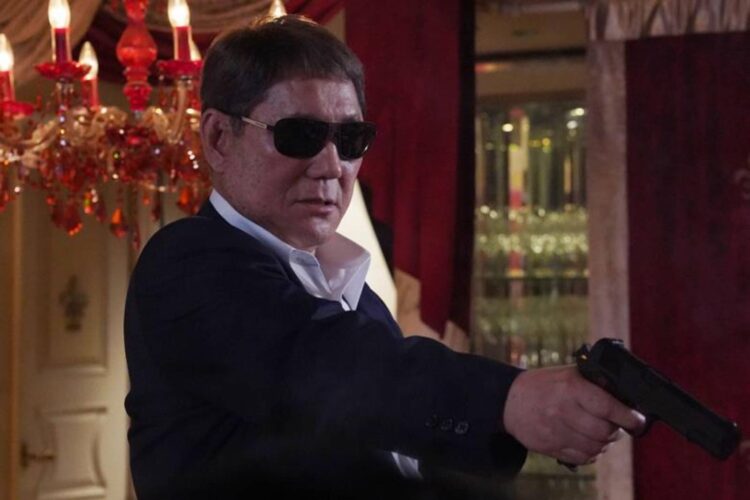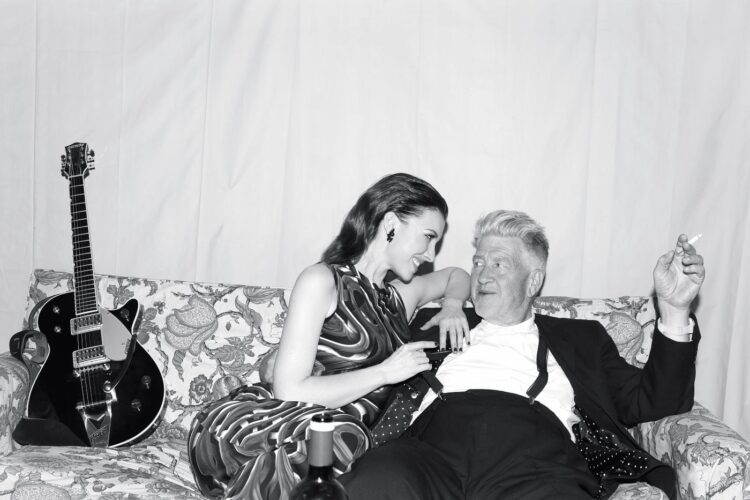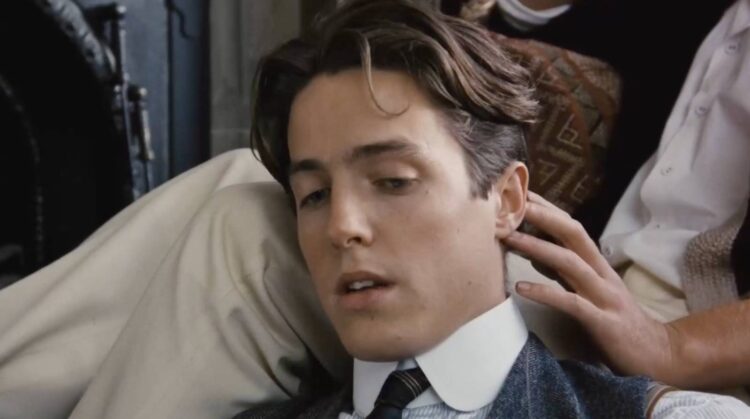

Fielding questions about Kubi, a period piece chronicling a few years of internecine feudal wars in 16th-century Japan, Takeshi Kitano dismissed some rumors he’d stoked. The film wasn’t going to be his last, as he’d previously suggested. In fact, he was already working on the next, a parody that would explore “the theme of comedy within violent movies.” I have no way of knowing when exactly the director will choose to put an end to a career that’s spanned four decades––the man is so prolific and allergic to stasis you’d expect him to keep working till the very last breath. But there’s something about his latest, Broken Rage, that makes it an apt summation of his cinema, and a farewell-of-sorts; hidden behind its farcical facades is the specter of a filmmaker revisiting his entire canon, leitmotifs, and style.
In the months between Kubi’s Cannes premiere and Broken Rage’s bow in Venice, Kitano returned to the TV program that catapulted him to megastar status, Takeshi’s Castle, appearing in a handful of episodes of the game show reboot. Launched in the mid-1980s, Castle helped cement Kitano’s irreverent alter-ego, “Beat” Takeshi, as a household name, yet it also fostered a kind of split personality disorder the director’s had to wrestle with since. How on earth were audiences expected to square the image of the bawdy comedian and TV icon with that of the cineaste directing and starring in such dramas as Violent Cop, Fireworks, and Sonatine?
The truth is that antinomy was always misplaced. Kitano’s cinema never saw his two personas (Takeshi Kitano the auteur and Beat Takeshi the actor) as mutually exclusive, but sought instead to synthesize them. Even at their most austere and gruesome, his films wield humor as a weapon no less effective than the guns, knives, and katanas his characters have held through the years. Still, the skepticism which with his vehicles were initially welcomed took a long time debunking. It was only after Fireworks––winner of the 1997 Golden Lion at Venice––that critics back home would stop pegging his projects as the doodles of a “cinematic amateur” determined to upend rules and traditions. Yet Kitano’s films are at their strongest precisely when they give in to that subversiveness; his sleek, uncluttered filmmaking works because of the director’s ambivalences and contrasts, not despite them.
Enter Broken Rage. Split into two chapters, the film kicks off as a crime thriller before switching tones altogether and revisiting the first part scene-by-scene in a more delirious light. Kitano stars in both as a gun-for-hire. Infallible in the first and hopelessly clumsy in the second, he’s “Mouse” a hit man whose murderous routine is upended once cops recruit him to infiltrate a drug ring. Tonally distinct as they may be, humor permeates both parts. Even in the ostensibly more “serious” first, Kitano’s script moves with a childlike logic: it only takes Mouse a couple of punches in a staged brawl with another mole to ingratiate himself with the mobsters he’s been asked to spy on. His killing-machine loner is a comic riff on the other unbeatable assassins he played in the past (think of Otomo, the thug of his Outrage saga). But the commitment to poking fun at his onscreen personas is something I hadn’t seen him do since 2005’s Takeshis’, a comedy that nonetheless spiraled into self-indulgent flights of fancy. Nothing farther from Broken Rage’s spirit. This isn’t just a wildly funny film––the kind that sent people around me at the press premiere into convulsed laughter just a few scenes in––but a pointed rebuke to the discourse that saw the director’s two impulses (popular comedy and artful seriousness) as opposite poles in a magnetic field.
It is also a powerful reminder of Kitano’s fluency in slapstick comedy. Gags littering second segment may be nothing novel for his most faithful aficionados, but it’s still remarkable to see the 77-year-old willing to flagellate himself with falls, slips, and other near-death accidents. His cinema has always bristled with contagious playfulness, but Broken Rage doubles down on that. Long before a heated confrontation between yakuza gangsters is resolved with a game of musical chairs––a number straight out of a Takeshi’s Castle’s episode––the film feels like the work of a cineaste powered by nothing other than the desire to have fun with the material, all rules be damned. How else to explain the “running time filler” (sic) that suddenly pauses the film to unleash a live chat where viewers respond to all we’ve seen? “That’s so Takeshi,” one of them notes. True. But I still struggle to write this off as a minor Kitano. Clocking in at 62 minutes, Broken Rage is not a simple divertissement, but a rollicking self-portrait: an artist rethinking his relationship with the medium he’s mastered and having a decidedly grand time in the process.
Broken Rage premiered at the 2024 Venice Film Festival
The post Venice Review: Broken Rage Is a Hilarious, Rollicking Self-Portrait of Takeshi Kitano first appeared on The Film Stage.



